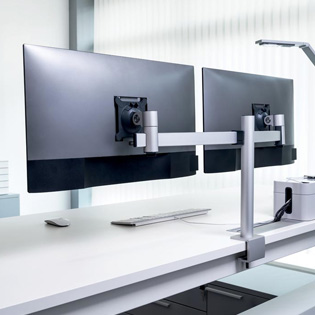January 24, 2022
If you have trouble concentrating, you’re not alone. According to the Harvard Business Review, “your executive function [the thing that helps you pay attention] peaks alongside other brain functions in your early 20s and then gradually diminishes over time.”
That’s pretty scary, especially since I can never seem to remember where I left my credit card… is it in my brown purse, coat pocket, or maybe my work bag?—Wait, where was I?
Oh yeah, staying focused – like I said, it’s hard.
For years, we’ve been told to eliminate distractions, bright colors, loud noises. But sometimes the lack of, well, everything feels like it makes it even easier for my mind to wander. Thankfully, it seems like pop culture is catching up to allow for the idea that people learn and work and focus and live differently. We’re all on a spectrum throughout different areas of our lives. Sitting still, for example, may not work for a neurodivergent person (the term neurodiversity is often only thought to encompass those with Autism, but was actually coined to refer to normal variations in the brain, see this article from Web MD).
Can a chair help me stay focused?
Sandra Capitelli-Frank shared this video of her son on his favorite chair, along with this note:
“The Swopper has been a life changer for our son who has Autism and is non-verbal. We keep it by his table where he does therapy and schoolwork. It helps him stay focused and increase his comprehension when doing his work. It also greatly helps him with sensory input which in turn reduces breakdowns!!!”
We also believe that movement can help anyone who considers themselves to be a creative thinker, big-picture or generally impulsive person. Forget the fidget spinner, try moving your whole body. Stand up, get an active work stool or an active platform mat.
School looked a little different last year for many of our kids. Kids may be required to continue or opt into starting virtual learning at home. This shift in learning environments has caused many parents to scramble to set up dedicated learning spaces for their kids at home.
Whether it’s a desk in their bedroom or a spot in your home office, kids deserve a functional workspace to help ensure their success doing virtual school or homework. For many, sitting all day in front of a computer can be difficult, so finding ways to incorporate movement is ideal.
Here are five tips for setting up a functional, ergonomic workspace for your kids learning at home:
1. Set up a true desk space.
When school went online in March 2020, many kids made do with sitting at the kitchen table or laying on their bedroom floor to do their schooling. Now that virtual learning is here to stay for many, it’s time to create a true desk space for your child. Having a desk set up will help kids enter “school mode” more easily and prevent their school time from bleeding into family or relaxing time. Ideally, this desk space will be in a quiet, calm spot in the house where they won’t be distracted by siblings or TV.
2. Invest in their tech.
The new reality of school means a lot of time on Zoom, Google classroom, and other forms of online learning. If your school doesn’t provide laptops, now may be the time to purchase a computer dedicated to school. To ensure your child uses proper posture and desk ergonomics, make sure to get a raised monitor, keyboard , and mouse to cut back on straining and slouching.
Also, make sure their workspace is well-lit no matter the weather or time of day. Consider the natural daylight technology of the Purify LED Sanitizing Desk Lamp with ClearSun® LED technology that reduces eyestrain by up to 51%. It also features patented SpectraClean™ Visible Light Disinfection technology which is designed to kill potentially harmful bacteria like those prevalent on mobile phones and desktops (including bacteria, fungus, and mold).
3. Buy an ergonomic chair.
Kids need to move in order to maximize their concentration. With school happening in front of a computer for many, this need for movement is even greater. When you buy a Swopper® motion chair, your child will be able to bounce, tilt, sway and spin while they work.
4. Make it colorful and interactive.
Kids learn best when they can use all their senses, so make sure their home desk has opportunities to interact. Fresh plants, photos of family/friends, scented markers, and their favorite snacks are all a great way to keep little learners happy in their workspace.
5. Use a height-adjustable workspace.
If possible, give your kids the options to sit, stand or perch using a height-adjustable desk and height-adjustable chair, like Muvman®. This lets your kids move throughout sitting positions as they feel comfortable. Science shows this is the healthiest, most productive way to work. If your kid likes to stand, hook them up with an anti-fatigue floor mat to help reduce strain on feet, knees, and back joints while also stimulating blood flow and reduce fatigue.
































